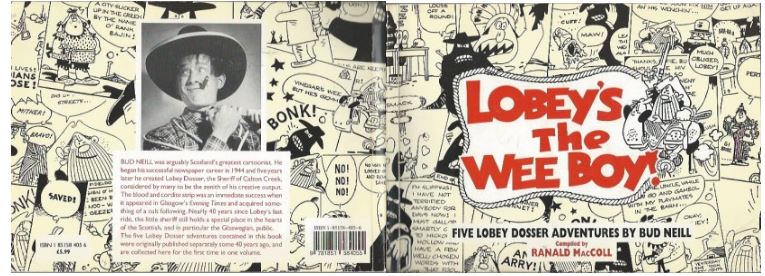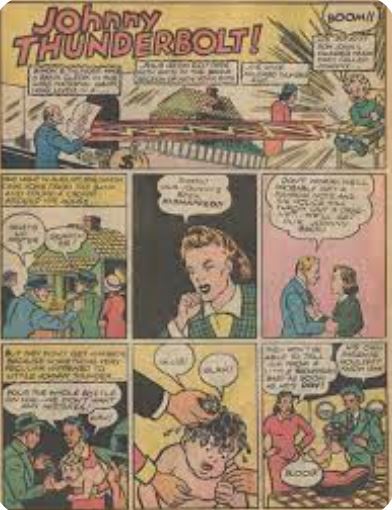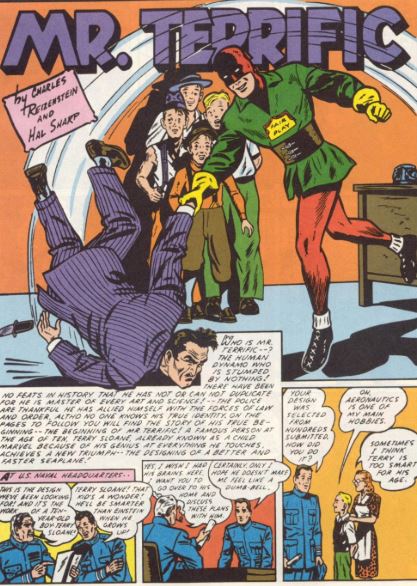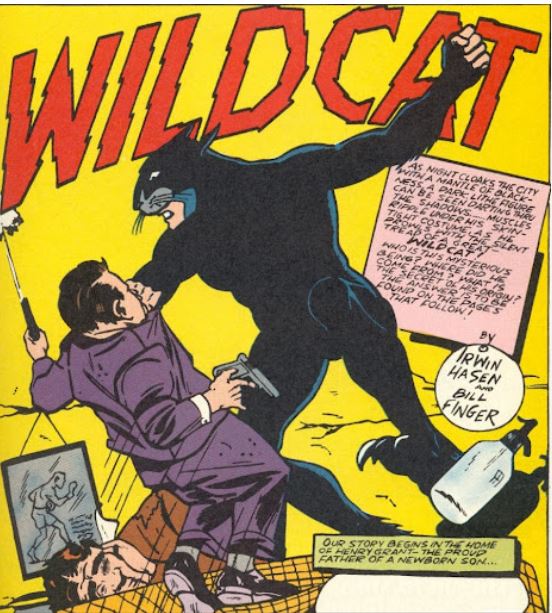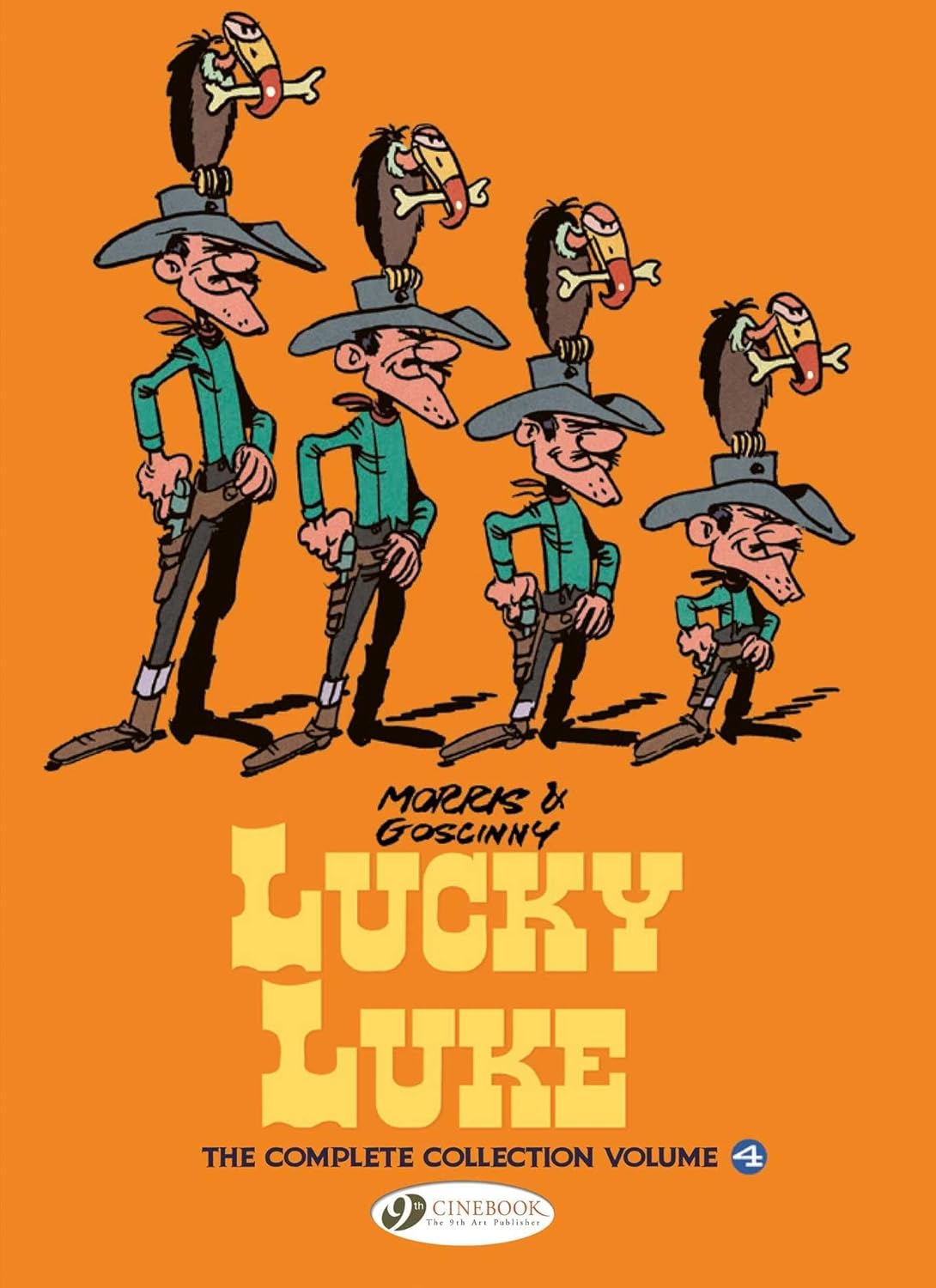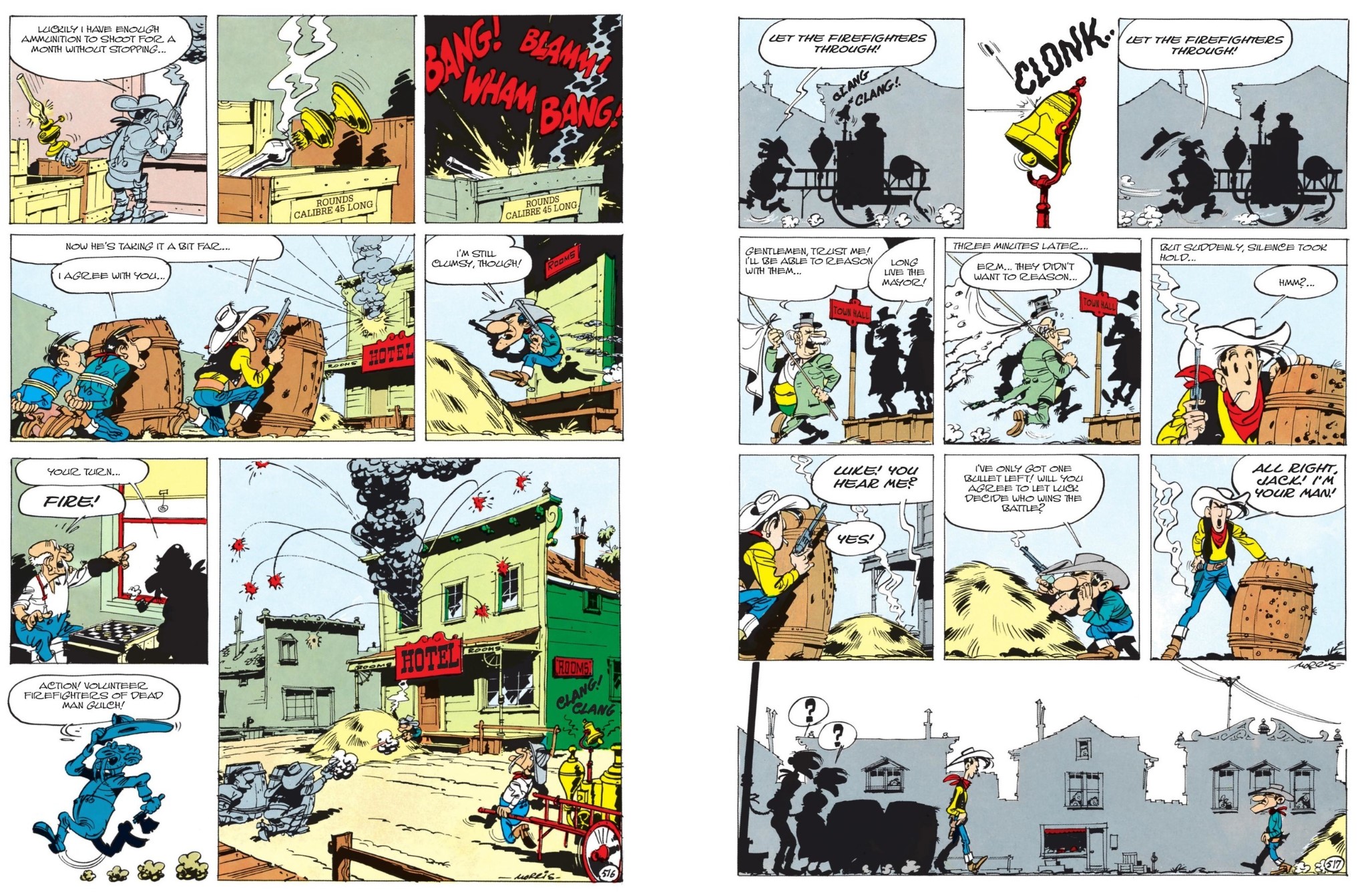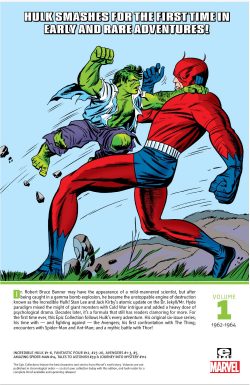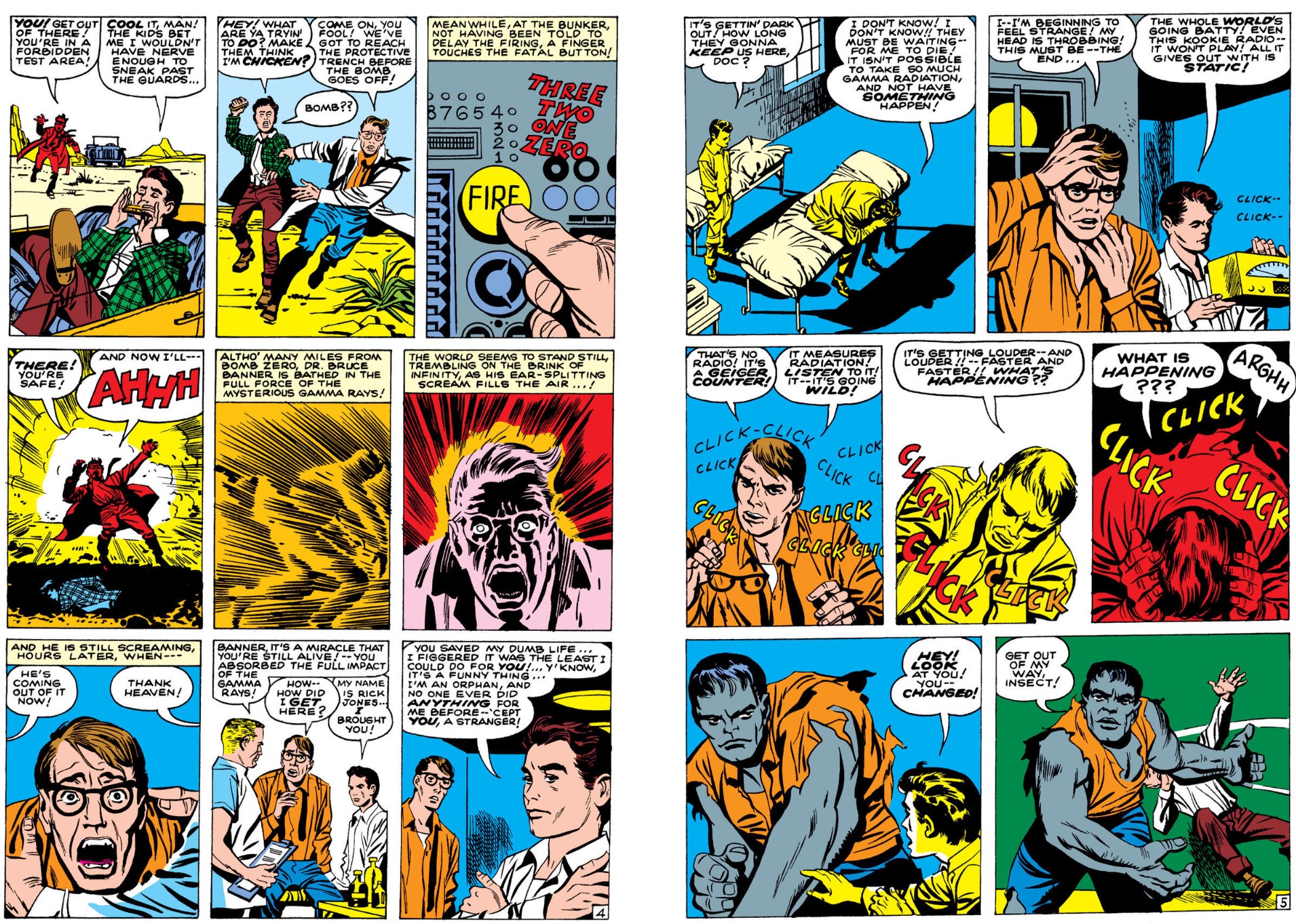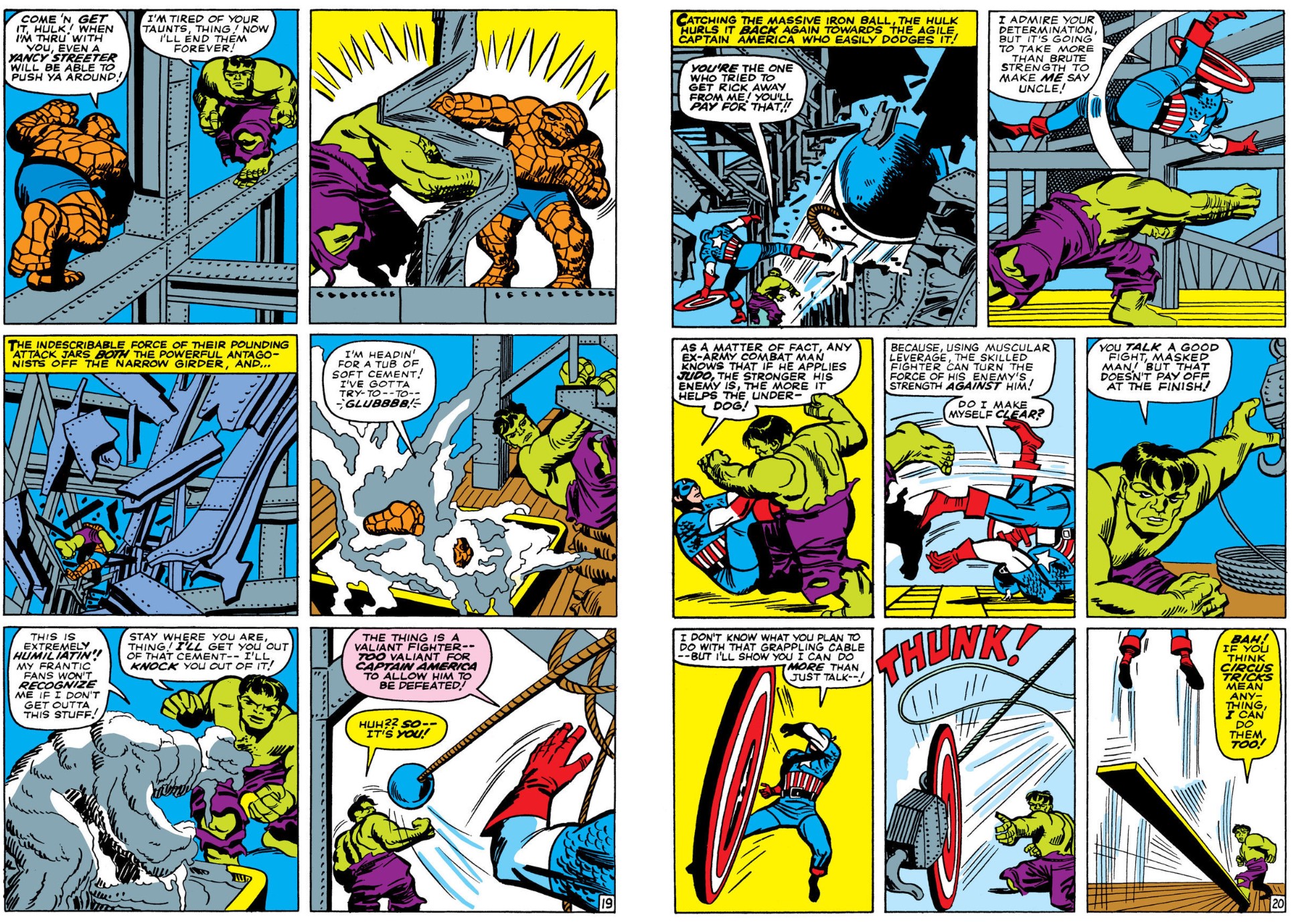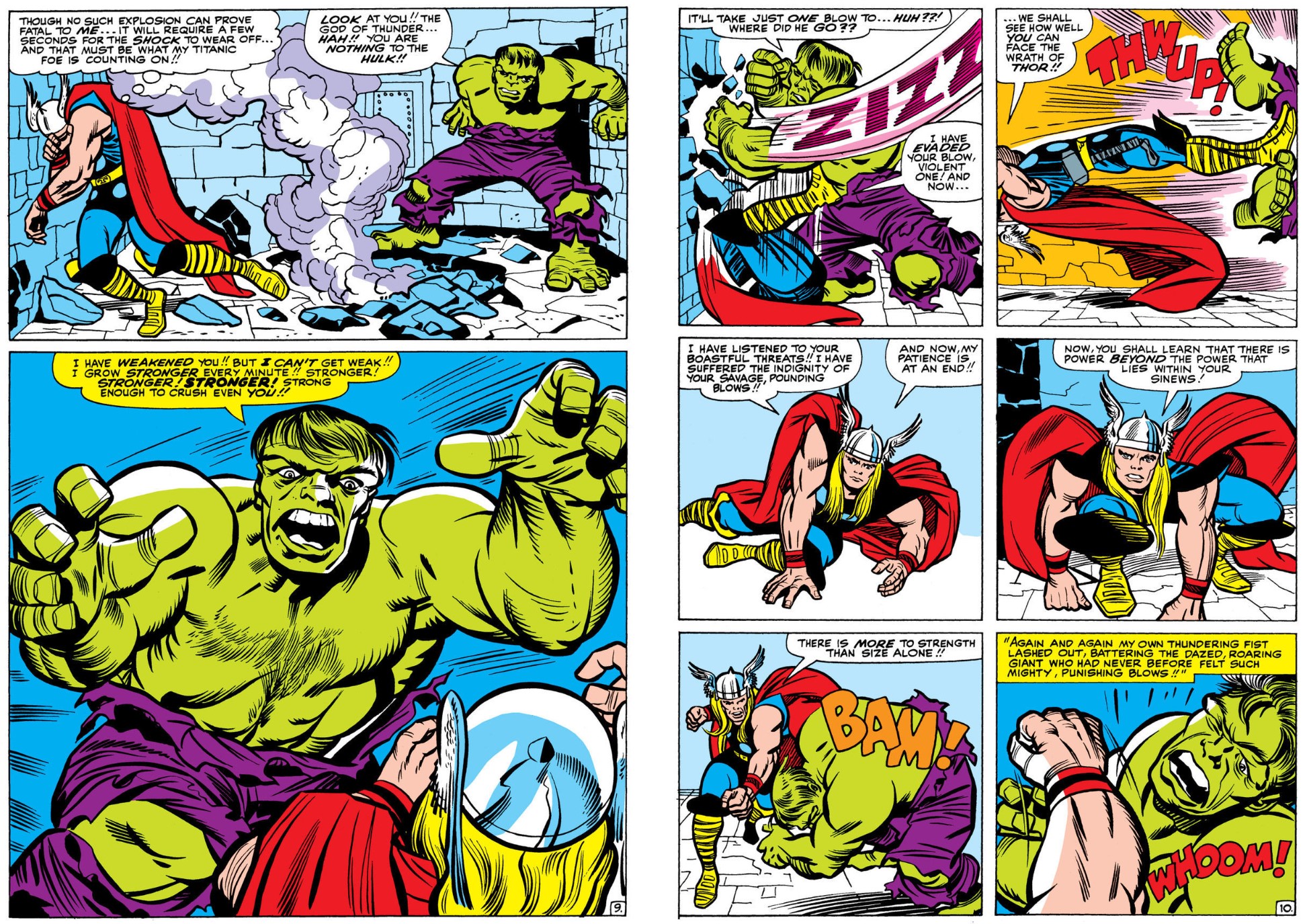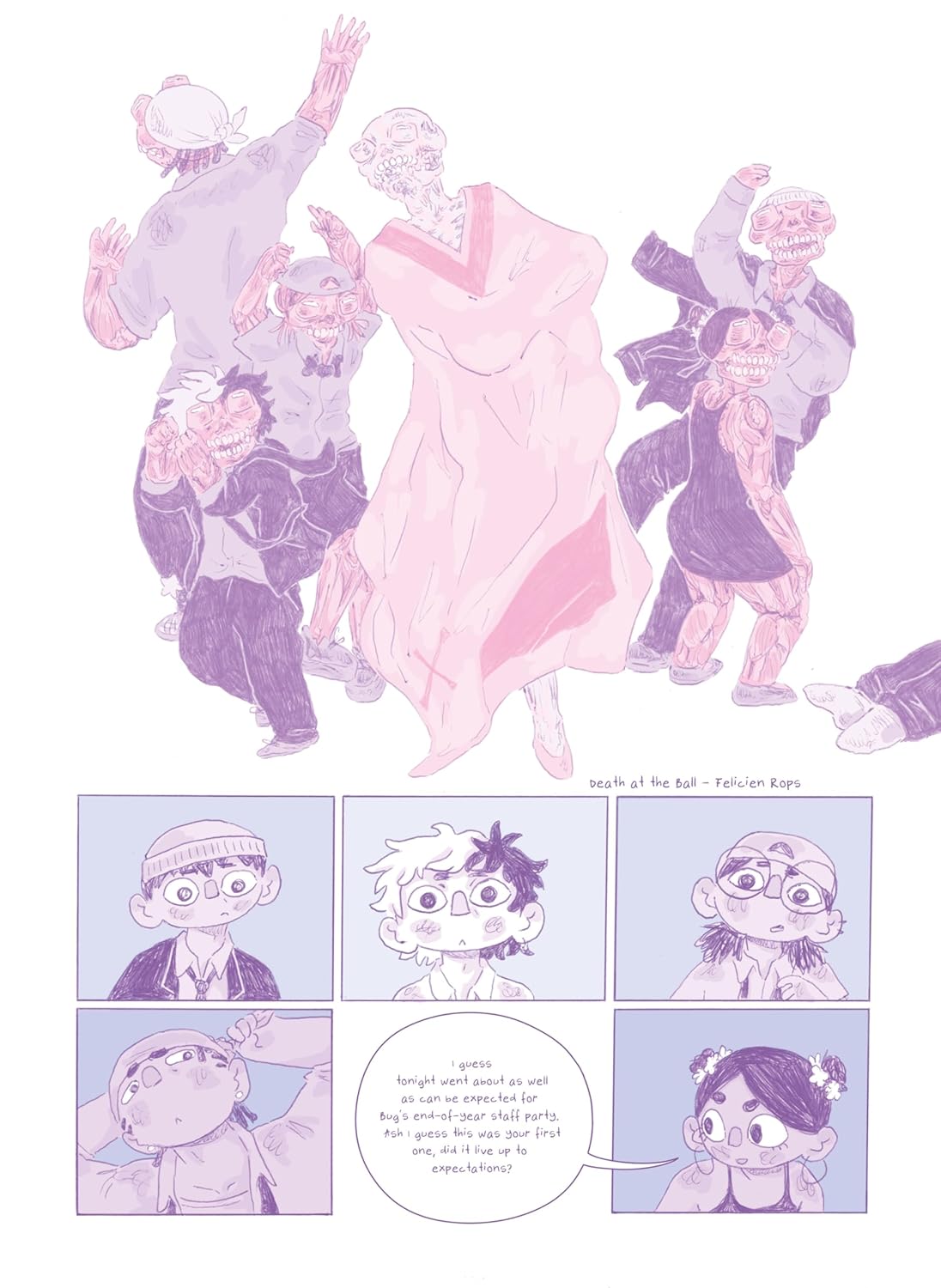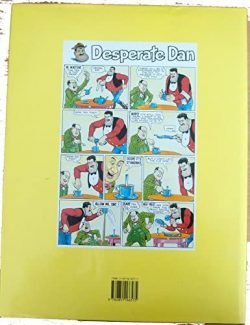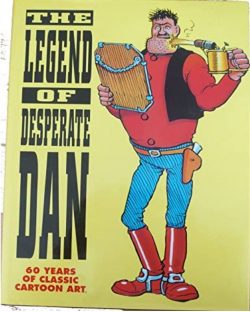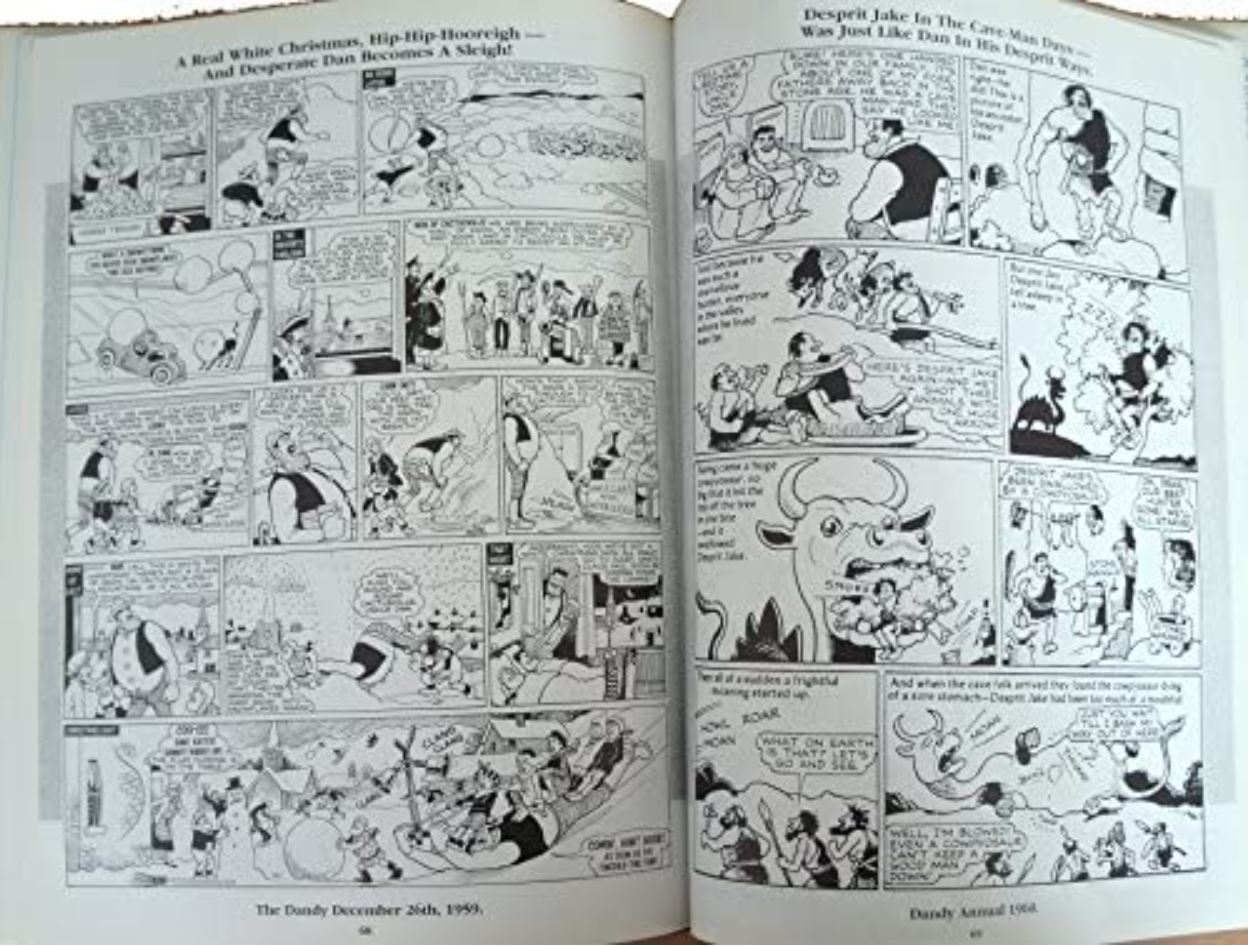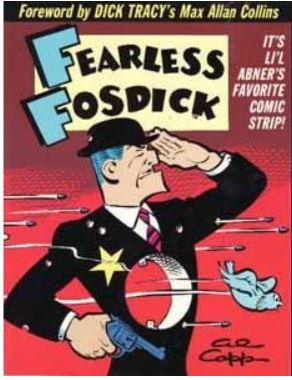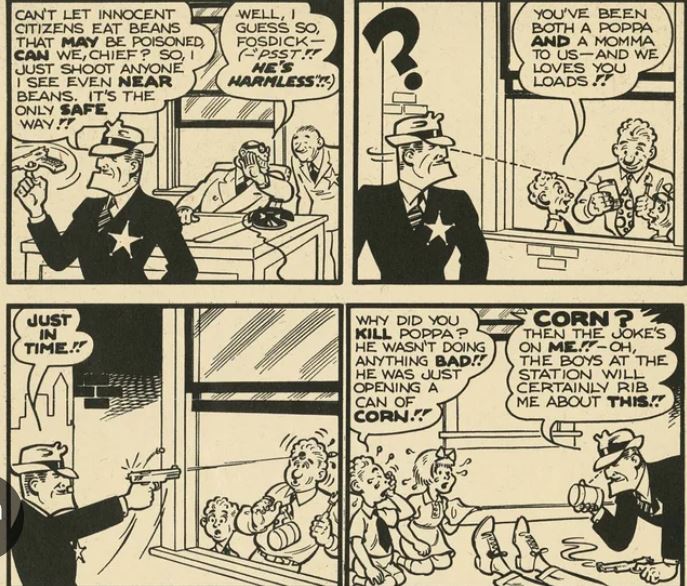
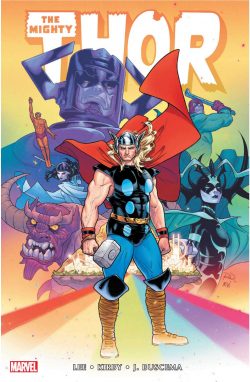
By Stan Lee & Jack Kirby, Larry Leiber, Gerry Conway, John Buscema, Neal Adams, Vince Colletta, Joe Sinnott, George Klein, Bill Everett, John Verpoorten, Sam Grainger, Jim Mooney, Sal Buscema, John Romita Sr., Art Simek, Sam Rosen & various & various (MARVEL)
ISBN: 978-1-3029-0381-7 (HB/Digital edition)
This book includes Discriminatory Content produced in less enlightened times
Win’s Christmas Gift Recommendation: A Epic Jewel of Historic Import… 9/10
We all still love superheroes right? Here’s another bunch of yarns thou shouldst not miss…
The Mighty Thor was the title in which Jack Kirby’s restless fascination with all things Cosmic was honed and refined via dazzling graphics and captivating concepts. The King’s career-defining string of signature superheroic fantasies and power-packed pantheons all stemmed from a modest little fantasy/monster title called Journey into Mystery where – in the summer of 1962 – a tried-&-true comic book concept (feeble mortal remade as god-like hero) was revisited by fledgling Marvel Comics to add a Superman analogue to their growing roster of costumed adventurers.
It is lettered throughout by unsung superstars Art Simek &Sam Rosen, and hued by an unjustly anonymous band of colourists. As well as a monolithic assortment of nostalgic treats at the back, this mammoth tome is dotted throughout with recycled Introductions – ‘God and Mangog’ by Arlen Schumer, ‘The Beginning of the End’ by Jon B. Cooke, ‘Legendary Tales’ by Will Murray and ‘Asgard Forever!’ by Stan Lee, from previous Marvel Masterworks editions, and also includes editorial announcements and ‘The Hammer Strikes!’ news and letters pages for each original issue to enhance overall historical experience…
This blockbusting era-defining, full-colour third tome offers Asgardian exploits from Thor #153-194, collectively covering June 1968 to December 1971 as the Universe Jack built slowly began to succumb to the weight and stricture of Marvel’s abiding continuity, and the King sought ever more challenging innovation and spectacle…
Once upon a time lonely, lamed American doctor Donald Blake took a vacation in Norway only to encounter the vanguard of an alien invasion. Entombed in a cave, Blake found a gnarled old walking stick, which, when struck against the ground, turned him into the Norse God of Thunder! Without any hesitation or preamble the reborn godling was soon defending the weak and smiting the wicked. Months swiftly passed and rapacious extra-terrestrials, Commie dictators, costumed crazies and cheap thugs gradually gave way to a vast panoply of fantastic worlds and incredible, mythic menaces. Eventually the magnificent warrior’s ever-expanding world of Asgard was a regular feature and mesmerising milieu for the hero’s earlier adventures, heralding a fresh era of cosmic fantasy to run almost tangentially to the company’s signature superhero sagas.
The action begins here with the conclusion of another calamitous clash involving wicked stepbrother Loki. In the wilds of Asgard, Ulik the Troll had attacked Karnilla, Queen of the Norns and brave lovestruck god Balder offered to be her champion if she freed Thor’s beloved Sif from the awesome Destroyer armour her spirit was trapped in, and which had forced her to kill her briefly de-powered beloved.
Resurrected and triumphant, Thor united with his lost companions against Ulik, only to lose his newly re-energised hammer to Loki, who fled to Earth with it. In hot pursuit, the heroes followed and Sif was gravely wounded…
Now in ‘…But Dr. Blake Can Die!’ the Thunderer reverts to his mortal guise to surgically operate on the dying goddess – an opportunity for further mayhem that Loki cannot resist, but which our hero’s courage and ingenuity manage to frustrate…
Vanquished and hurled into an inter-dimensionally bottomless pit, furious Ulik saves himself whilst accidentally releasing an ancient unstoppable beast in #154’s ‘…To Wake the Mangog!’ A creature imprisoned by Odin in his ancient prime, the monster – embodying the power and spirit of a billion, billion predatory warriors – emerges incandescent at his long incarceration and, brutally laying waste to everything in its path, rampages towards the heart of Asgard to trigger Ragnarok in ‘Now Ends the Universe!’ All of the Golden Realm’s martial resources are unable to slow the deadly march to doom in ‘The Hammer and the Holocaust!’ but their valiant delaying tactics, depicted in unimaginably powerful battles scenes from a genius on fire Kirby resulted in a last-minute save in #157’s ‘Behind Him… Ragnarok!’
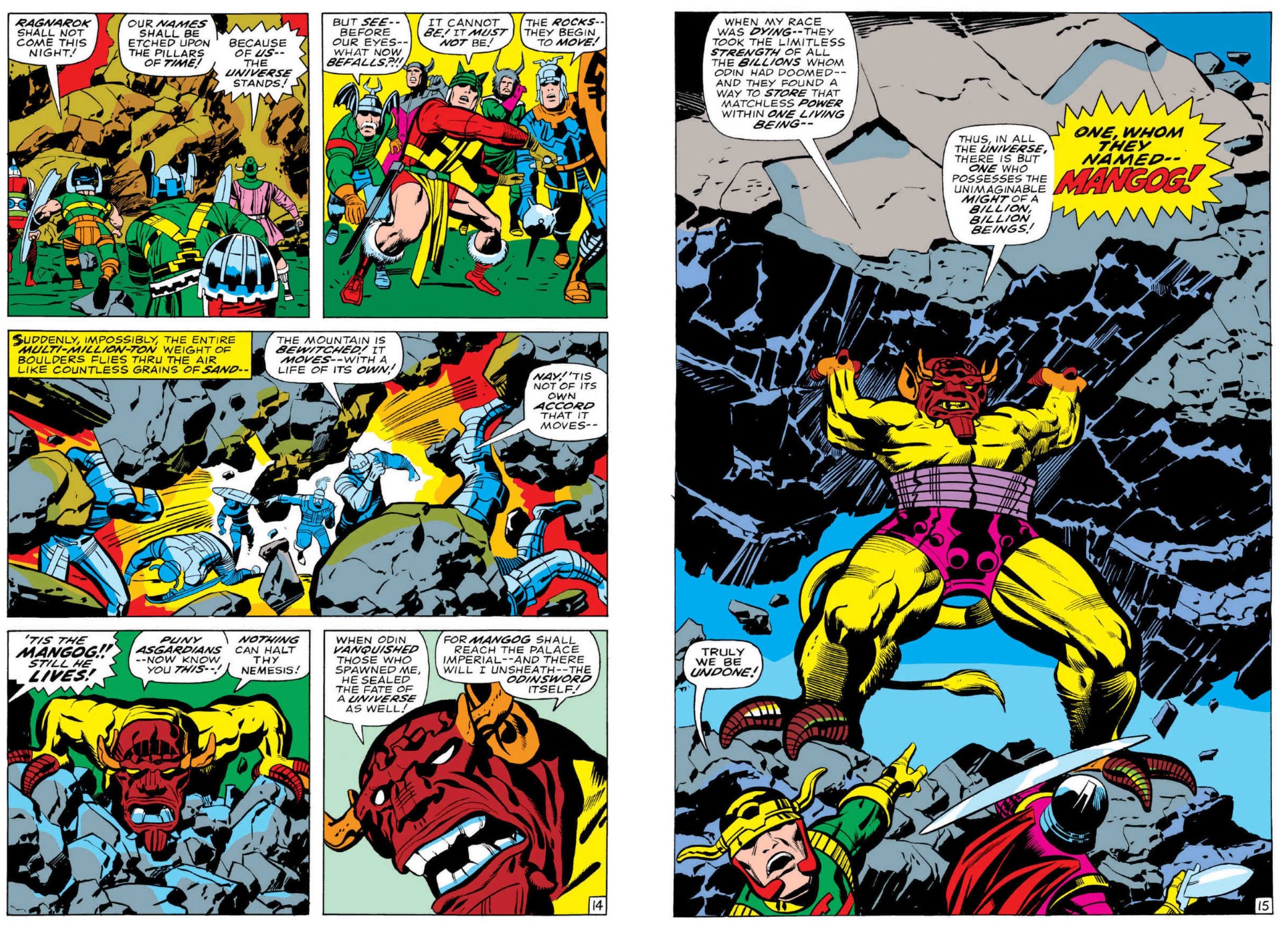
Although short on plot development, the astounding struggle to save Asgard is a masterful expression of the artist’s hunger for bigger stories, and might well have underpinned his later Fourth World series at DC…
The peculiarities of the Blake/Thor relationship were examined and finally clarified next; beginning with ‘The Way it Was!’ – a framing sequence by regular creative team Stan Lee, Kirby & Vince Colletta – that book-ended a reprint of the Thor debut story from Journey into Mystery #83, ‘The Stone Men of Saturn’ (scripted by Larry Leiber and inked by Joe Sinnott). This memory moment neatly segues into ‘The Answer at Last!’ taking the immortal hero back to his long-distant youth to reveal Blake as an Odinian construct designed to teach the Thunderer humility and compassion by living amongst mortals as one of them…
With his true nature re-established, Thor answers a call from the galaxy-roving Colonisers of Rigel, plunging into the depths of space to face a cosmic menace. ‘And Now… Galactus!’ reintroduced old AI companion The Recorder whilst pitting the Devourer of Worlds against living planet Ego: a clash concluded with the Thunderer’s heavy-handed aid in ‘Shall a God Prevail?’ The cosmic wonderment then escalates in ‘Galactus is Born!’ as Asgardian magic finally reveals a tantalising fragment of the terrifying space god’s origins…
Pausing briefly for text interlude ‘The Beginning of the End’ by Jon B. Cooke, we then storm onwards into a sci-fi-fuelled two-parter. In #163 & 164 Thor is summarily despatched to Earth to battle an invasion from a ghastly dystopian future. ‘Where Demons Dwell!’ sees his lover Lady Sif investigating a bizarre energy vortex until captured by Mutate monsters led by rogue Greek god Pluto. The reunited Asgardians decimate the horrors from tomorrow ‘Lest Mankind Fall!’ and as valiant comrade Balder rejoins them in cataclysmic combat, a mysterious cocoon hatches a man-made god…
‘Him!’ (Thor #165) and its conclusion ‘A God Berserk!’ see the creature created by evil scientists to conquer mankind – and who would eventually evolve into tragic cosmic saviour Adam Warlock – wake amidst the turmoil of the battle and, seeing Sif, decide it is time he took a mate…
Trailing the naive artificial superman across space and assorted dimensions with the outraged Thor, Balder witnesses his gentle comrade’s descent into brutal “warrior-madness”, resulting in a savage beating of Him. By the time the Thunderer regains his equilibrium, he is a shaken, penitent and guilt-ridden hero, eager to pay penance for his unaccustomed savagery.
In ‘This World Renounced!’ (sporting a cover by John Romita: the first ever not drawn by Kirby) almighty Odin punishes his son for succumbing to Warrior Madness by exiling him to deep space, where he must atone by locating enigmatic world-devourer Galactus. However, just before departure, the Prince of Asgard clears up some outstanding old business, including another confrontation with his stepbrother Loki…
Superb George Klein came aboard as inker for ‘Galactus Found!’ with Balder and the Warriors Three (Fandral, Hogun & Volstagg) babysitting Earth as Thor roams the heavens on his lonely mission. By the time a new threat emerges in Red China, in the deep unknown Galactus meets to Thor to disclose ‘The Awesome Answer!’ to his origins: a dose of pure Kirby Kosmology of truly staggering proportions. Meanwhile back home, the terrifying Thermal Man is making things far too hot for both his Chinese creators and the Lands of the Free…
With comics legend Bill Everett assuming inking chores, Thor #170’s ‘The Thunder God and the Thermal Man’ finds the star-lost hero on Earth with mission accomplished, to discover New York besieged by a walking atomic nightmare. Tumbling straight into cataclysmic combat beside his Asgardian comrades against the unstoppable mechanoid menace, Thor is suddenly deprived of his allies at the height of the struggle when Balder, Hogun, Fandral & Volstagg are arcanely abducted to Asgard by Loki and the Norn Queen. Nevertheless, the turbulent Thunder God triumphs…
Alone on Earth, Thor next faces a series of single-issue situations: confronting ‘The Wrath of The Wrecker!’ to crush the Norn-empowered bandit before foiling the body-swapping plot of billionaire Kronin Krask in ‘The Immortal and the Mind-Slave!’ after which Will Murray’s text treatise on ‘Legendary Tales’ offers a breather prior to our godly hero overcoming the earthbound fury of ‘Ulik Unleashed!’ after the titanic troll succumbs to the mesmeric wiles of old Thor adversaries The Circus of Crime…

The Thunderer continues punching down after a strength-stealing robot runs amok in ‘The Carnage of the Crypto-Man!’ before the last great epic of the Kirby-era begins, behind a Marie Severin cover as ‘The Fall of Asgard!’ (Lee, Kirby & Everett) sees valiant Balder and the Warriors Three barely escape the clutches of lovestruck Karnilla to confront the assembled hordes of giants and trolls marching on the Home of the Gods. With All-Father Odin incapacitated by his annual Great Sleep, perfidious Loki has seized the throne, forcing war-goddess Sif to summon Thor home for perhaps the Last Battle…
Inked by Colletta, ‘Inferno!’ reveals the usurper’s folly as fire-demon Surtur sunders his ancient Odinian captivity to instigate his pre-ordained task of burning down the universe. With everything appearing ‘To End in Flames!’, Loki flees to Earth, having first hidden Odin’s comatose form in the life-inimical Sea of Eternal Night. As Thor leads a heroic Horatian last stand, Balder penetrates the Dimension of Death to rescue the All-Father just as Surtur fires up for his fulminating final foray. It’s a close call but is not yet the end…
Thor #178 (July 1970) was a shock and is a landmark: the first issue without Jack Kirby since the strip’s formative days. Clearly a try-out or hasty fill-in yarn, ‘Death is a Stranger’ – by Lee, John Buscema & Colletta – sees the Thunderer snatched away from Asgard by the nefarious Abomination and duped into clashing with the Stranger: an extra-galactic alien powerhouse who collects unique beings for scientific study…
Inked by John Verpoorten, the interrupted epic riotously resumed in #179 with ‘No More the Thunder God!’ as Thor, Sif & Balder are sent to Earth to arrest fugitive Loki. The issue was Kirby’s last: he left the entire vast unfolding new mythology on a monumental cliffhanger just as the Thunder God is ambushed by his wicked step-brother. Using arcane magic, the Lord of Evil switches bodies with his noble sibling and gains safety and the power of the Storm whilst Thor is doomed to endure whatever punishment Odin decrees…
More than any other Marvel strip Thor was the feature where Kirby’s creative brilliance matched his questing exploration of an Infinite Imaginative Cosmos: dreaming, extrapolating and honing a dazzling new kind of storytelling graphics with soul-searching, mind-boggling concepts of Man’s place in the universe.
Although what followed contained the trappings and even spirit of that incredible marriage, the heart, soul and soaring, unfettered wonderment just were not there any longer: nor would they truly return until 1983 when Walt Simonson assumed creative control with #337.
Here, then ‘When Gods Go Mad!’ introduces the radically different style of hot property Neal Adams, inked by comfortably familiar Joe Sinnott, as the true Thunderer is sent to Hell and the tender mercies of Mephisto, whilst on Earth Loki uses his brother’s body to terrorise the UN Assembly and declare himself Master of the World. In #181’s ‘One God Must Fall’ Sif leads the Warriors Three on a rescue mission to the Infernal Realm as Balder struggles to combat the power of Thor merged with the magic and malice of Loki until Mephisto is thwarted. Then, a cataclysmic battle of brothers on Earth subsequently sets the world to rights…
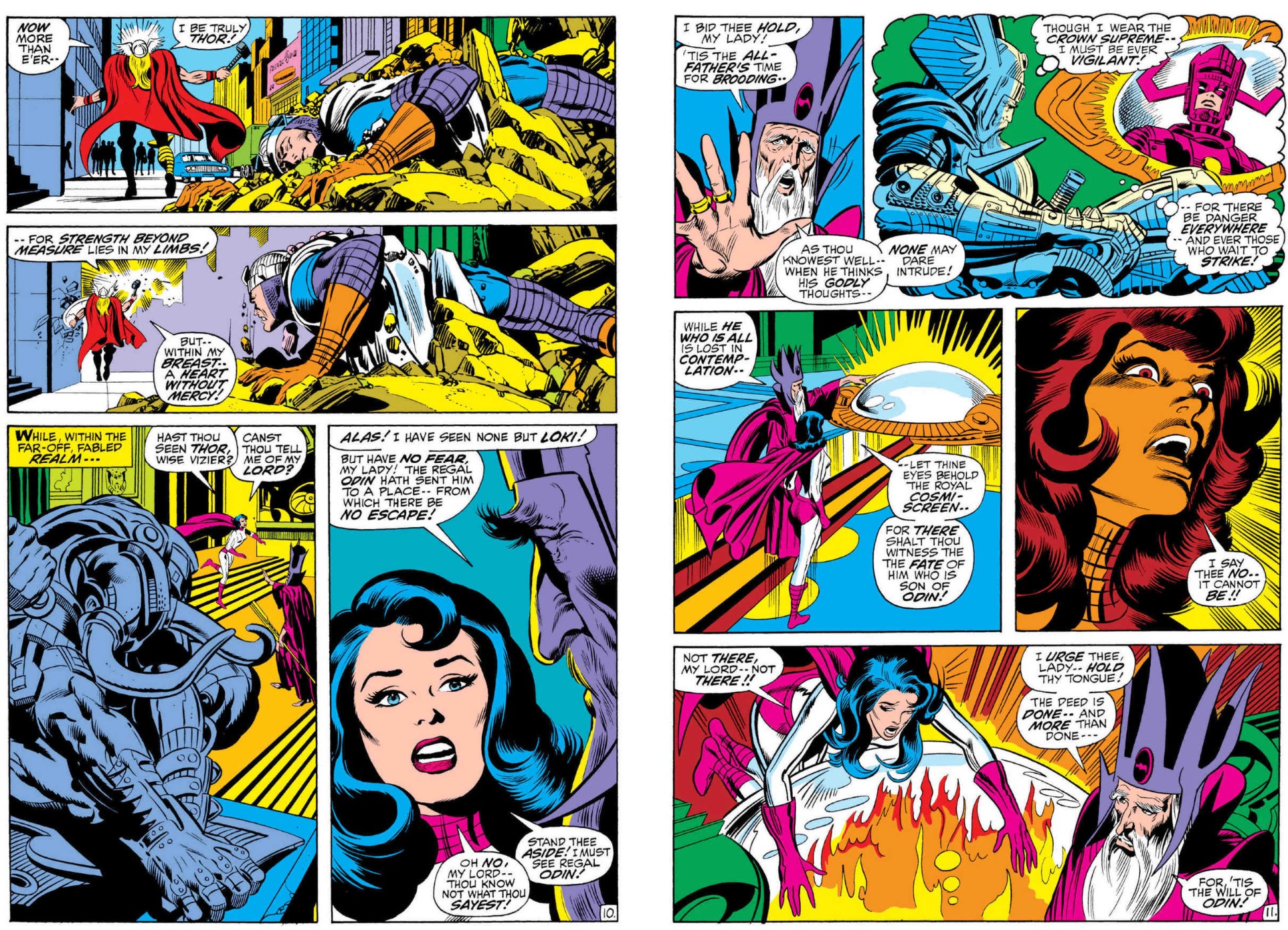
The new Post-Kirby era truly began with Thor #182, as John Buscema took up the artistic reins and began his own epic run as illustrator with ‘The Prisoner… The Power… and… Dr. Doom!’ Here the Storm Lord becomes entangled in Earthly politics when a young girl entreats him to rescue her father from the deadly Iron Monarch of Latveria. The godling cannot refuse, especially as the missing parent is an expert on missile technology and capable of making Doom the master of ICBM warfare…
The decidedly down-to-Earth and rather mismatched melodrama concludes with Don Blake ‘Trapped in Doomsland!’ until Thor can retrieve his recently misappropriated mallet, but even after his deadly mission of mercy is accomplished, tragedy is his only reward…
Preceded by Stan Lee’s text piece ‘Asgard Forever!’ the first epic of the new age sees Lee, Buscema & Joe Sinnott crafting their own ambitious cosmic saga, opening with #184, exploring ‘The World Beyond!’ wherein an implacable, sinister force devours the outer galaxies, with psychic reverberations of the horrific events impacting and unravelling life on Earth and in Asgard. With all creation imperilled, Odin departs to combat the enigmatic threat alone…
Sam Grainger inked ‘In the Grip of Infinity!’, as universal calamity intensifies and the All-Father falls to an enigmatic, seemingly all-consuming invader before ‘Worlds at War!’ exposes a hidden architect behind the encroaching armageddon. That revelation leads to a desperate last-ditch ploy, uniting the forces of Good and Evil in ‘The World is Lost!’ before one final clash – inked by Jim Mooney – answers all the questions before celebrating ‘The End of Infinity!’ Although vast in scope and drenched in powerful moments highlighting the human side of the gods in extremis, this tale suffers from an excess of repetitive padding and a rather erratic pace. Without pause, though, we plunge on as Thor #189 sees sepulchral goddess Hela come calling, demanding Thor feel ‘The Icy Touch of Death!’ to pay for all the souls she didn’t get in the recent sidereal showdown…
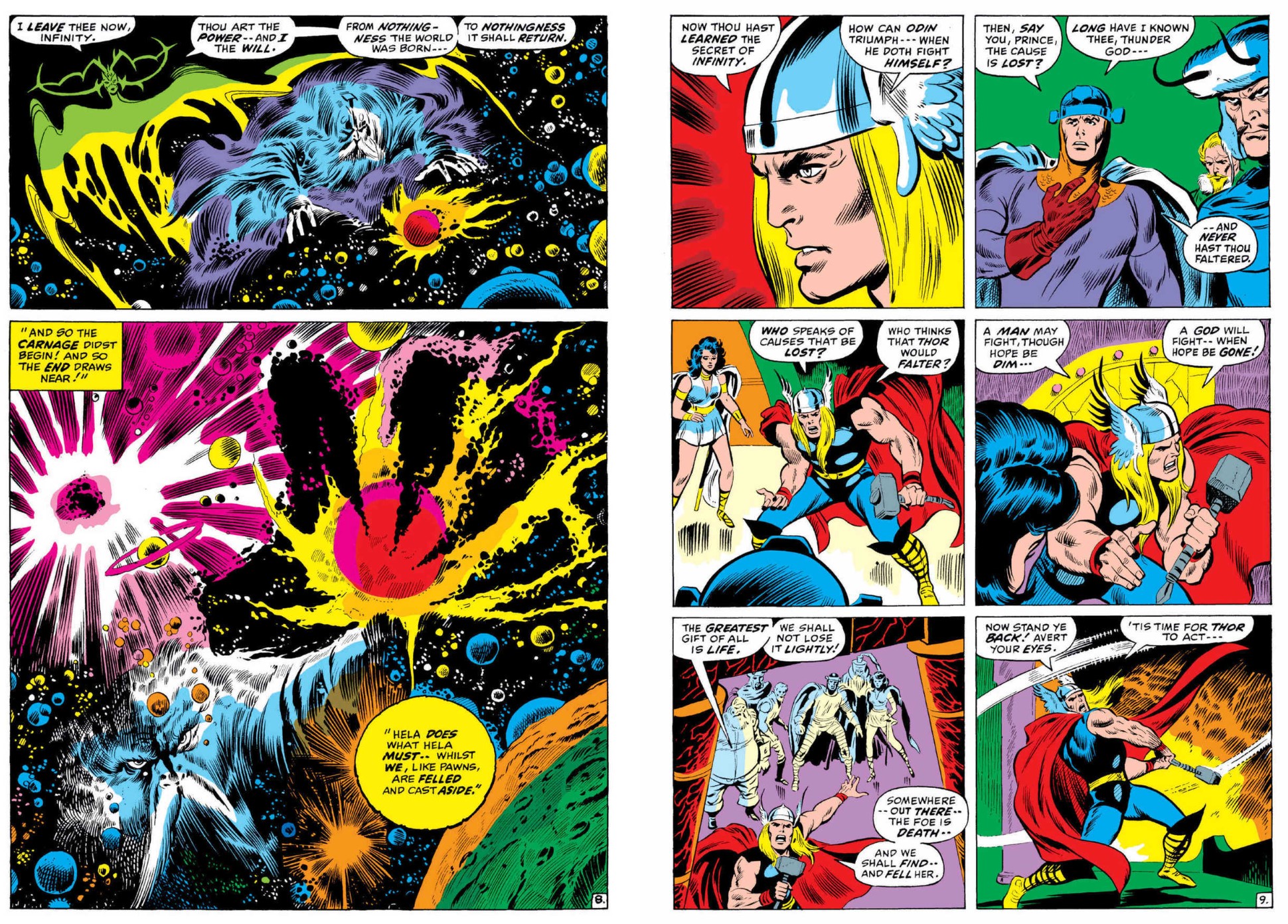
After a big chase around planet Earth she is finally dissuaded in ‘…And So, To Die!’, but the distraction has meanwhile allowed ever-opportunistic Loki to seize the Throne of Asgard and unleash ‘A Time of Evil!’ This typically tyrannical behaviour results in the deranged despot using Odin’s stolen power to manifest an unstoppable artificial hunter/killer dubbed Durok the Demolisher. Unleashing his merciless engine of destruction on Earth, Loki gloats at the ‘Conflagration!’ (Grainger inks) he has callously instigated…
Completing the retiring of the Old Guard, Gerry Conway came aboard as writer for double-length tale ‘What Power Unleashed?’ (#193, with Sal Buscema augmenting & inking brother John) to conclude the epic tale. Prevented by vows from taking up arms against Loki’s puppet, Balder and Sif sagely enlist the Silver Surfer to aid the embattled Thunderer as Asgard totters on the brink of total destruction. Free to act against the real enemy, Thor then retaliates with staggering power and ‘This Fatal Fury!’: occupying the usurper’s full and furious attention until All-Father Odin finally resumes his rightful place.
To be Continued…
Kirby’s Thor will always be a high point in graphic fantasy, all the more impressive for the sheer imagination and timeless readability of the tales. With his departure the series foundered for the longest time before finding a new identity, yet even so the stories in this volume still offer intrigue and action, magnificently rendered by illustrators who, whilst not possessing Kirby’s vaulting visionary passion, were every inch his equal in craft and dedication.
With covers by Kirby, Colletta, Romita, John & Sal Buscema, Everett, Klein, Severin, Adams, Sinnott & Chic Stone, this book also includes the covers to Thor Annuals #3 & 4, pertinent house ads and a huge selection of original artwork plus unedited and unused images and story pages by Kirby, Buscema, Everett, Verpoorten, Grainger, and Mooney. Also on view are the covers to Tales of Asgard #1 (1968 by Kirby) and the 1984 re-release with a Simonson frontage, as well as Super-Villain Classics #1 (Bob Layton) recycling Galactus’ origins as seen in Thor between #160 &168… and it’s 1996 re-release with Steve Epting on the cover.
Other potent pictures include interlocking covers by Olivier Coipel, Mark Morales & Laura Martin from the 2009 Tales of Asgard series, re-re-re-printing Lee & Kirby’s Asgardian back-ups.
This is unmissable fantasy action and an absolute must for all fans of the medium, and all disciples of the modern Norse gods.
© 2022 MARVEL.
Today in 1916 stellar DC inker Stan Kaye was born. Two years later Frank King’s Gasoline Alley began – the longest-running current strip in US, and second-longest running strip of all time. It certainly outlasted Ham Fisher’s boxing strip Joe Palooka, which began in 1930 and ended today in 1984. Two years later, Al Smith died. He had inherited and sustained Bud Fisher’s Mutt and Jeff from 1932 to 1980.

